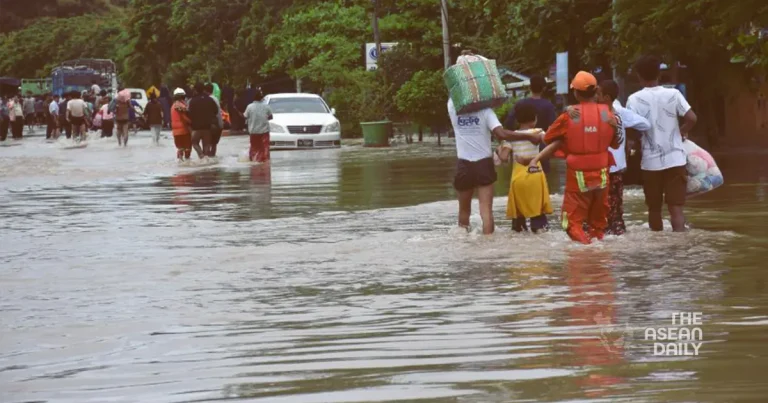13-9-2024 (YANGON) Torrential rains have unleashed devastating floods in and around Myanmar’s capital city, claiming at least 19 lives and forcing the evacuation of over 3,600 people, according to reports from the national fire service. The disaster comes as the latest blow to a country already grappling with political turmoil and widespread conflict.
The deluge, triggered by the effects of Typhoon Yagi – the most powerful storm to hit Asia this year – has wreaked havoc across Southeast Asia. In neighbouring Vietnam and Thailand, the death toll has surpassed 230, with swollen rivers inundating major urban centres.
Myanmar’s plight is particularly dire, given the ongoing unrest following the military coup in February 2021. The country has been mired in violence, with an armed rebellion comprising newly formed resistance groups and established ethnic minority armies challenging the military’s iron grip. This political instability, coupled with a crippling economic crisis, has left Myanmar ill-equipped to handle the current natural disaster.
Satellite imagery analysis by the UN-backed Myanmar Information Management Unit revealed the extent of the flooding. As of Thursday, approximately 162 square kilometres surrounding the capital Naypyitaw were submerged. The situation in Mandalay, Myanmar’s second-largest city, appeared even more grave, with an estimated 366 square kilometres under water.
The fire department, in a late Thursday Facebook post detailing its Naypyitaw operations, reported: “In total, 3,602 flood-affected people from 30 locations were rescued and moved.” Harrowing photographs shared by the department depicted buildings engulfed by floodwaters and desperate residents, including women and children, stranded on rooftops before being rescued by boat.
The humanitarian crisis is further complicated by the fact that roughly a third of Myanmar’s 55 million population requires assistance. However, many aid agencies, including the International Committee of the Red Cross, face severe limitations in their operations due to access restrictions and security risks.




